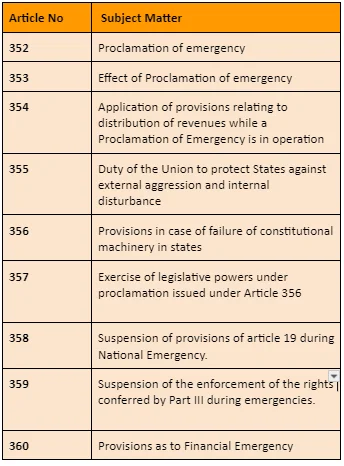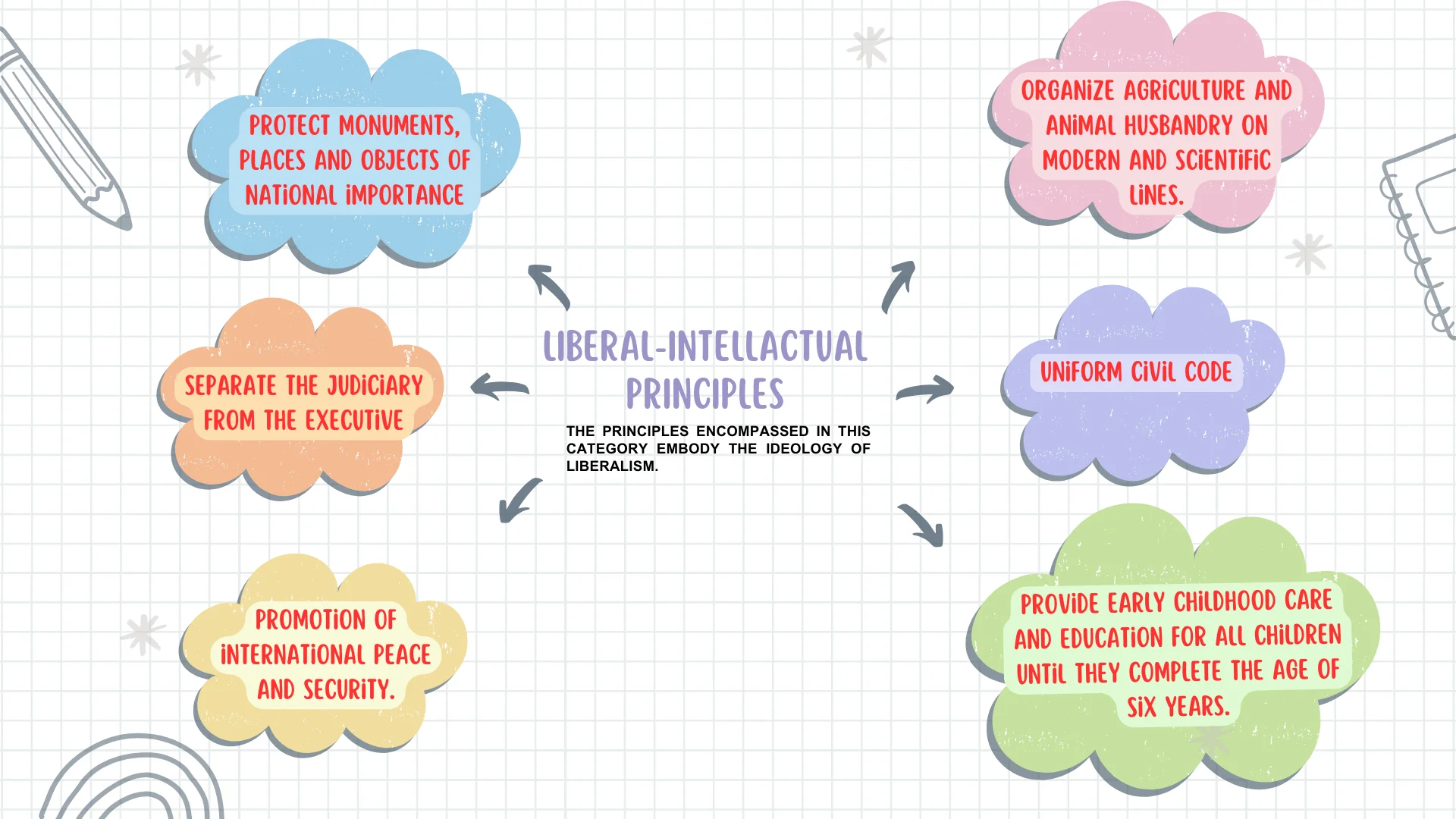President’s Rule in India is a crucial mechanism under Article 356, allowing the central government to take control when a state government fails. Recommendations from various commissions emphasize its use as a last resort, promoting accountability and judicial review. Understanding these guidelines is essential for ensuring democratic governance. This framework aims to balance state autonomy with national interests.
Understanding State Emergency and President’s Rule
Various Commission’s recommendation on President’s Rule
- Sarkaria Commission (1988):
- Last Resort for President’s Rule: President’s Rule should be imposed as a last resort, with guidelines for its application.
- Independent Review Authority: Suggested the appointment of an independent authority to review the imposition of the President’s Rule.
- Exhausting Alternatives: In case of a breakdown of public order, first exhaust all the alternative means like sending paramilitary forces, security forces, and use of Article 352.
- Punchhi Commission (2007): The President’s Rule should be imposed sparingly, and other alternatives should be explored first.

- National Commission to Review the Working of the Constitution:
- Communication of Non-Compliance: Before imposition the center should indicate to the State government the matters in which it was not acting in accordance with the Constitution and then it has a reasonable opportunity to administer corrective action.
- Specific Reasons for Imposition: Give specific reasons for the imposition of Article 356.
- Mandatory Floor Tests: Floor tests should be mandatory.
- Clarity on Legislative Assembly Actions: The ground for dissolving/suspending the Legislative Assembly must also be clearly explained.
Enroll now for UPSC Online Course
Note:
|
Comparison Between National Emergency and President’s rule
| Aspects | National Emergency(Article 352) | Presidents Rule (Article 356) |
| Authority |
|
|
| Declaration |
|
|
| Reason |
|
|
| Scope |
|
|
| Duration |
|
|
| Impact on Legislature |
|
|
| Impact on State Government |
|
|
| Fundamental Rights (FR) |
|
|
| Adoption of Proclamation Criteria |
|
|
| Revocation Method |
|
|
Financial Emergency (Art. 360)
The President proclaims a Financial Emergency under Article 360 if he is satisfied that the financial stability or credit of India, or any part thereof is threatened.
| Note:
The 38th Amendment Act of 1975 initially established that the President’s decision to declare a Financial Emergency was considered final and unquestionable in any court. However, the 44th Amendment Act of 1978 removed this provision, indicating that the President’s satisfaction could be subject to judicial review. |
Procedures and safeguards
- Parliamentary Approval Requirement: This proclamation must be approved within two months from the date of its issue by the Parliament with a simple majority, meaning a majority of the members present and voting.
- Approval After Lok Sabha Dissolution: If the Lok Sabha is dissolved within that period of two months, the proclamation has to be approved within thirty days of the first sitting of the newly constituted Lok Sabha provided that the Proclamation has been approved by the Rajya Sabha. It can continue for an indefinite period, till it is revoked by the President.
- This implies two key aspects:
- Indefinite Duration: There is no defined maximum duration for its enforcement.
- No Repeated Consent: Repeated Parliamentary consent is not necessary for its extension.
- Revocation Authority: The President has the authority to revoke a Financial Emergency at any time through a subsequent proclamation, and this action does not necessitate parliamentary approval.
Consequences of a Financial Emergency
- Executive Authority: The Executive authority of the Union extends to giving directions to any state:
- To follow financial propriety and any other directives deemed necessary by the President.
- To Reserve all money bills or other financial bills for the consideration of the President after they have been passed by the state legislature.
- The President also has the power to issue directions for reducing salaries and allowances for:
- All or specific groups of individuals serving the Union.
- Judges of the Supreme Court and the High Courts.
President Rule In various States of India
| State | Years |
| Andhra Pradesh | 1973, 1982, 1983 |
| Arunachal Pradesh | 1979, 1980, 2016 (twice), 2017, 2019 |
| Assam | 1950, 1959, 1979, 1980, 1990, 1991, 1992 |
| Bihar | 1968, 1977, 1980, 1989, 1990, 1997, 2005, 2019 |
| Goa | 1990 |
| Gujarat | 1975 |
| Haryana | 1967 |
| Himachal Pradesh | 1977 |
| Jammu and Kashmir | 1965, 1977, 1986, 1990, 1996, 2002, 2008, 2018 |
| Jharkhand | 2009, 2013, 2015 |
| Karnataka | 1956, 1971, 1980, 1989, 2006, 2007 |
| Kerala | 1959, 1965, 1979, 1981, 1982 |
| Madhya Pradesh | 1977, 1980, 1992 |
| Maharashtra | 1963, 1978, 2019 |
| Manipur | 1967, 1970, 1971, 1992, 2001, 2014, 2021 |
| Meghalaya | 1979 |
| Mizoram | 1977, 1988 |
| Nagaland | 1960, 1961, 1971, 1988, 1989, 2008 |
| Odisha | 1961, 1971 |
| Puducherry | 1968 |
| Punjab | 1951,1966.1968,1971,1977,1980,1983, 1987 |
| Rajasthan | 1951, 1952, 1977 |
| Sikkim | 1975, 1979, 1984, 1994 |
| Tamil Nadu | 1976, 1980, 1988, 1991, 1996 |
| Telangana | 2014 |
| Tripura | 1971,1977,1993 |
| Uttar Pradesh | 1968,1970,1973,1975,1977,1980, 1992, 1995, 2002 |
| Uttarakhand | 2016 |
| West Bengal | 1962, 1969, 1971, 1972, 1977 |

Enroll now for UPSC Online Course
| Must Read | |
| Current Affairs | Editorial Analysis |
| Upsc Notes | Upsc Blogs |
| NCERT Notes | Free Main Answer Writing |
Conclusion
In conclusion, the President’s Rule serves as a safeguard for constitutional order in India. The recommendations from different commissions highlight the need for careful application and oversight to prevent misuse.
- By ensuring transparency and accountability, these measures help maintain the integrity of the political system. Ultimately, a thoughtful approach to President’s Rule supports a healthy democracy.
Sign up for the PWOnlyIAS Online Course by Physics Wallah and start your journey to IAS success today!
| Related Articles | |
| Article 360: Financial Emergency in India | Article 352: National Emergency in India |
| Features of Indian Constitution | President’s Rule: Article 356 Explained |

 GS Foundation
GS Foundation Optional Course
Optional Course Combo Courses
Combo Courses Degree Program
Degree Program









